
what you'll learn...
Limits by Numerator and Denominator
Slopes of the numerator and denominator at the point x=ax=a decide the limits of f(x)f(x) at x=ax=a.
» eg: f(x)=2x-4x-2f(x)=2x−4x−2
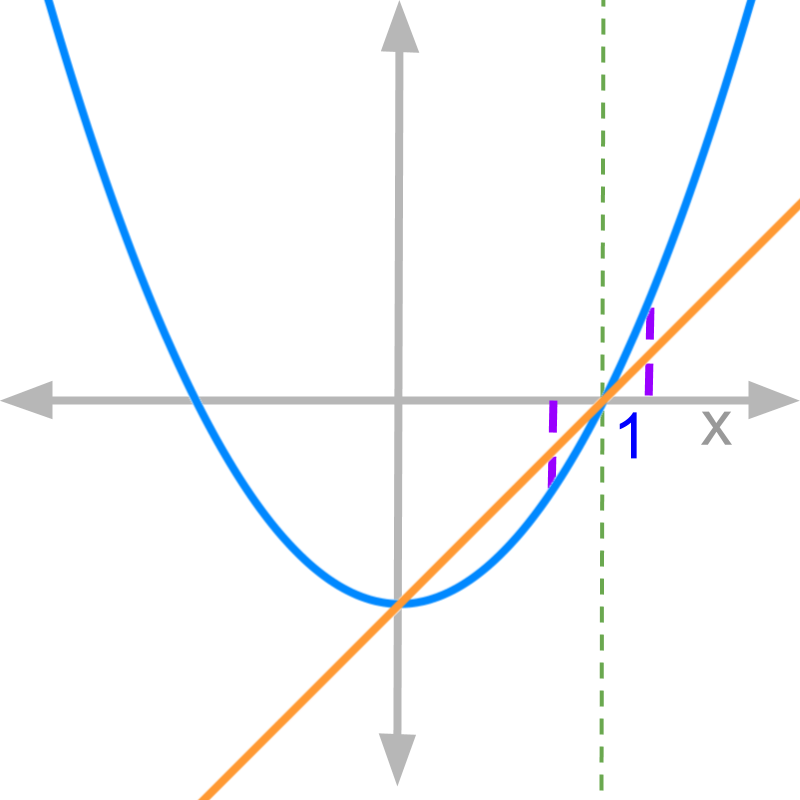 → slope of numerator at x=2x=2 is 22
→ slope of numerator at x=2x=2 is 22
→ slope of denominator at x=2x=2 is 1
→ Both LHL and RHL limits =21=2
linear slopes
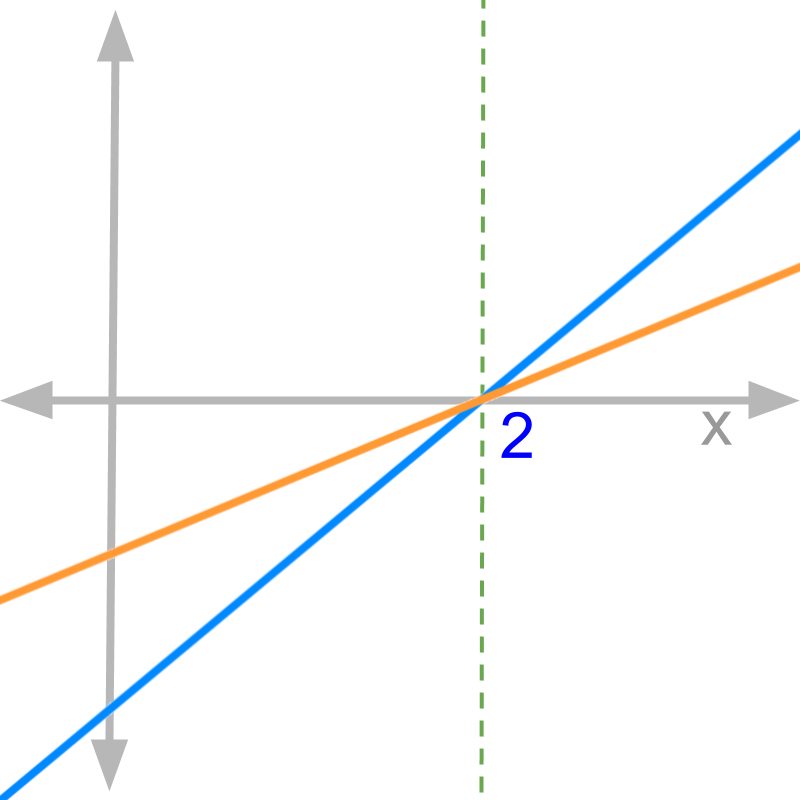
Consider the graphs of numerator (in blue) and denominator (in orange) of function f(x).
The value of limx→2f(x)>1. This is because, the slope of numerator is greater than the denominator.
The function given is f(x)=2x-4x-2. The slope of the numerator is 2 and slope of the denominator is 1.
Left-hand-limit x=2-δ of
2x-4x-2
=2(2-δ)-42-δ-2
=4-2δ-4-δ
=-2δ-δ
=2
Similarly, the right-hand-limit can be worked out to 2.
negative slope
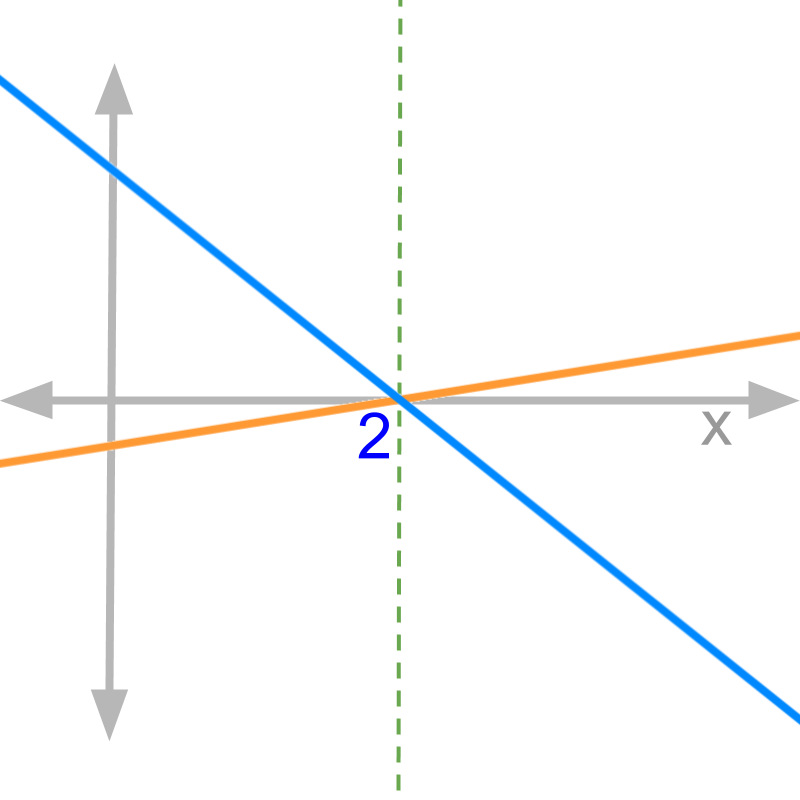
Consider the graphs of numerator (in blue) and denominator (in orange) of function f(x).
The value of limx→2f(x)<-1. This is because, the slope of the numerator is negative and decreasing steeper than the denominator.
The function given is f(x)=6-3x.5x-1. The slope of the numerator is -3 and the slope of the denominator is 0.5.
Right-hand-limit x=2+δ
6-3(2+δ)0.5(2+δ)-1
=-3δ0.5δ
=-6
Similarly, left hand limit can be worked out as -6.
same slopes
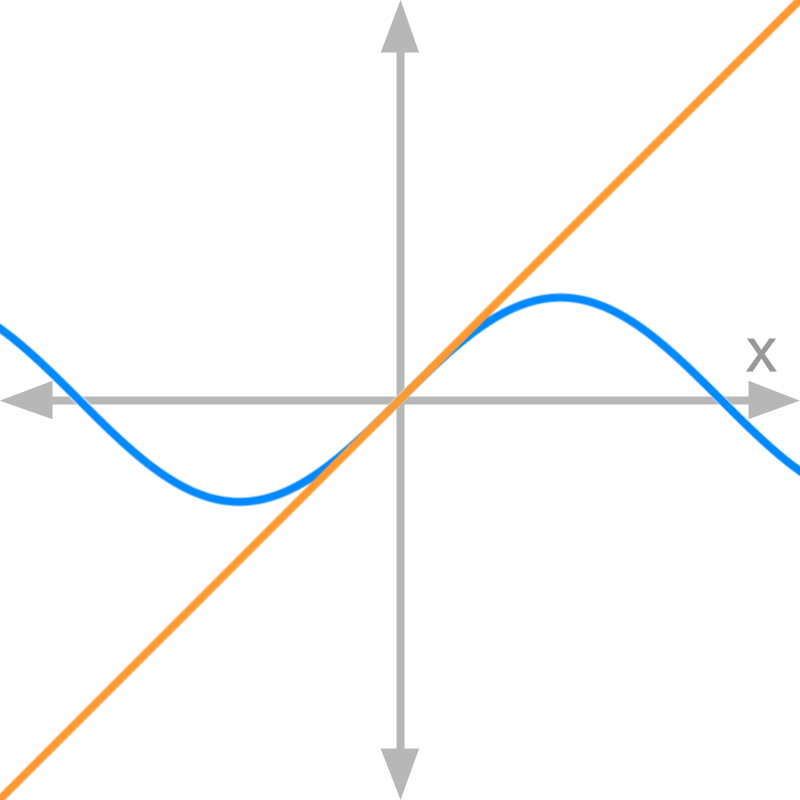
Consider the graphs of numerator (in blue) and denominator (in orange) of function f(x).
The value of limx→0f(x)=1. This is because, the slope of the numerator equals that of the denominator at the given point.
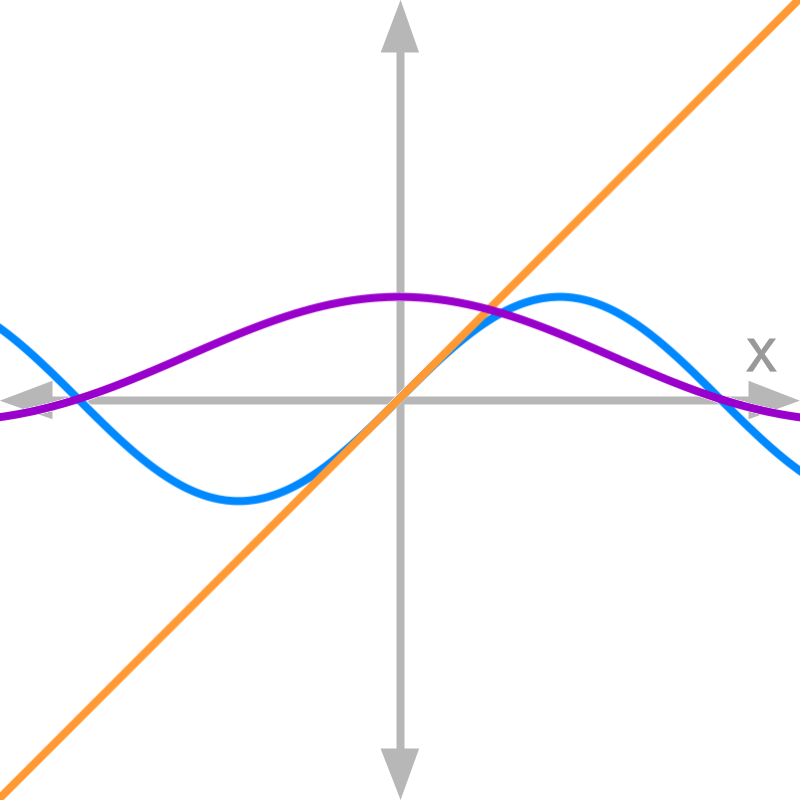
Consider the graphs of numerator (in blue) and denominator (in orange) of function f(x) (in purple).
The function given is f(x)=sinxx. At x=0 the slope of the numerator is 1 and slope of the denominator is 1.
Proof for limit of this function is explained later.

Consider the graphs of numerator (in blue) and denominator (in orange) of function f(x).
The value of limx→0f(x)=0. This is because, the slope of the numerator is 0 and that of the denominator is 1.
slope = 0

Consider the graphs of numerator (in blue) and denominator (in orange) of function f(x) (in purple).
The function given is f(x)=1-cosxx. The slope of the numerator is 0 and the slope of the denominator is 1.
Proof for limit of this function is explained later.
don't analyse with limit

Consider the graphs of numerator (in blue) and denominator (in orange) of function f(x).
The value of limx→0+f(x)=∞. This function is not a candidate to analyze numerator and denominator, as the function does not evaluate to 00 form.
don't limit

Consider the graphs of numerator (in blue) and denominator (in orange) of function f(x) (in purple).
The function given is f(x)=1x.
This function does not satisfy the pre-condition that numerator and denominator has to evaluate to 0. So the analysis by comparing slopes is not applicable.
example

Consider the graphs of numerator (in blue) and denominator (in orange) of function f(x).
The answer is '0'. The slope of numerator is 0 and that of the denominator is 1.
summary
Slopes of the numerator and denominator at the point x=a decide the limits of f(x) at x=a.
» eg: f(x)=2x-4x-2
 → slope of numerator at x=2 is 2
→ slope of numerator at x=2 is 2
→ slope of denominator at x=2 is 1
→ Both LHL and RHL limits =21=2
Outline
The outline of material to learn "limits (calculus)" is as follows.
Note : click here for detailed outline of Limits(Calculus).
→ Indeterminate and Undefined
→ Indeterminate value in Functions
→ Expected Value
→ Continuity
→ Definition by Limits
→ Geometrical Explanation for Limits
→ Limit with Numerator and Denominator
→ Limits of Ratios - Examples
→ L'hospital Rule
→ Examining a function
→ Algebra of Limits
→ Limit of a Polynomial
→ Limit of Ratio of Zeros
→ Limit of ratio of infinities
→ limit of Binomial
→ Limit of Non-algebraic Functions